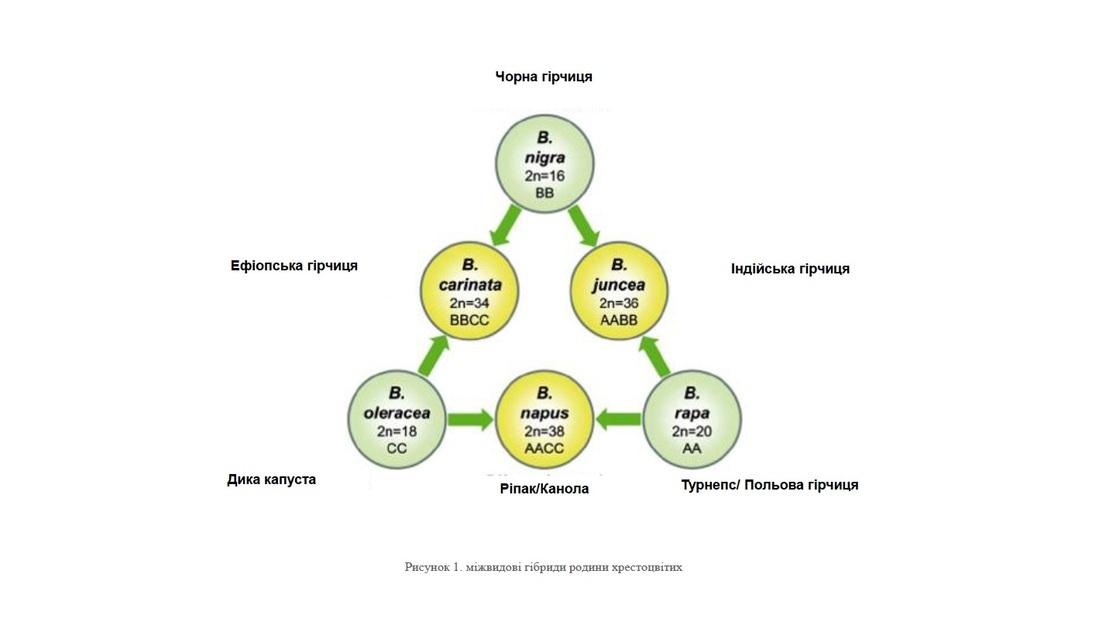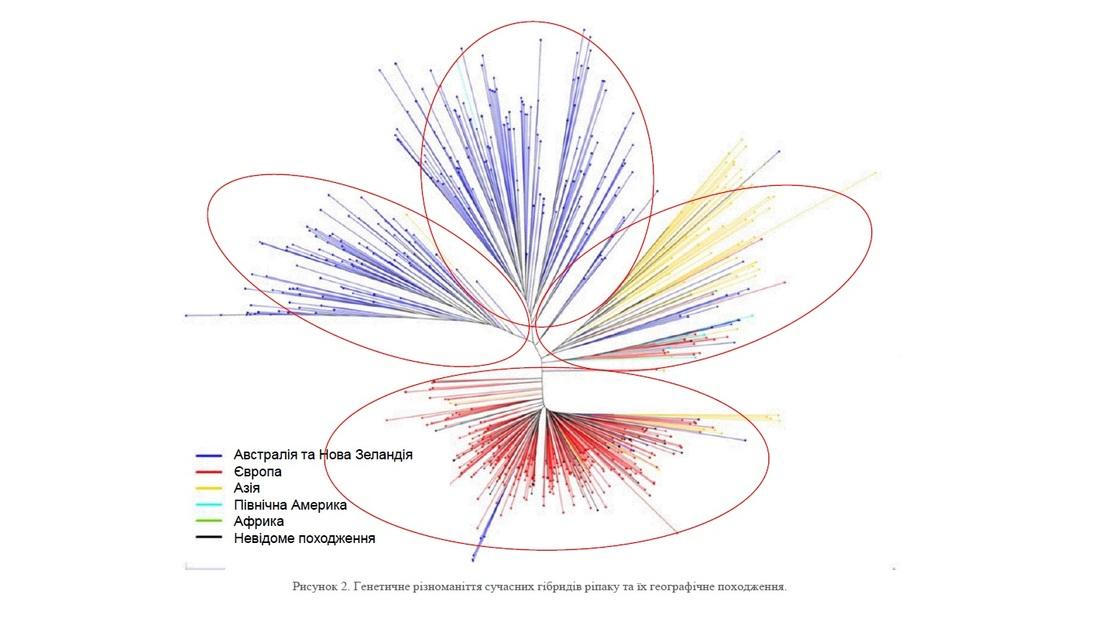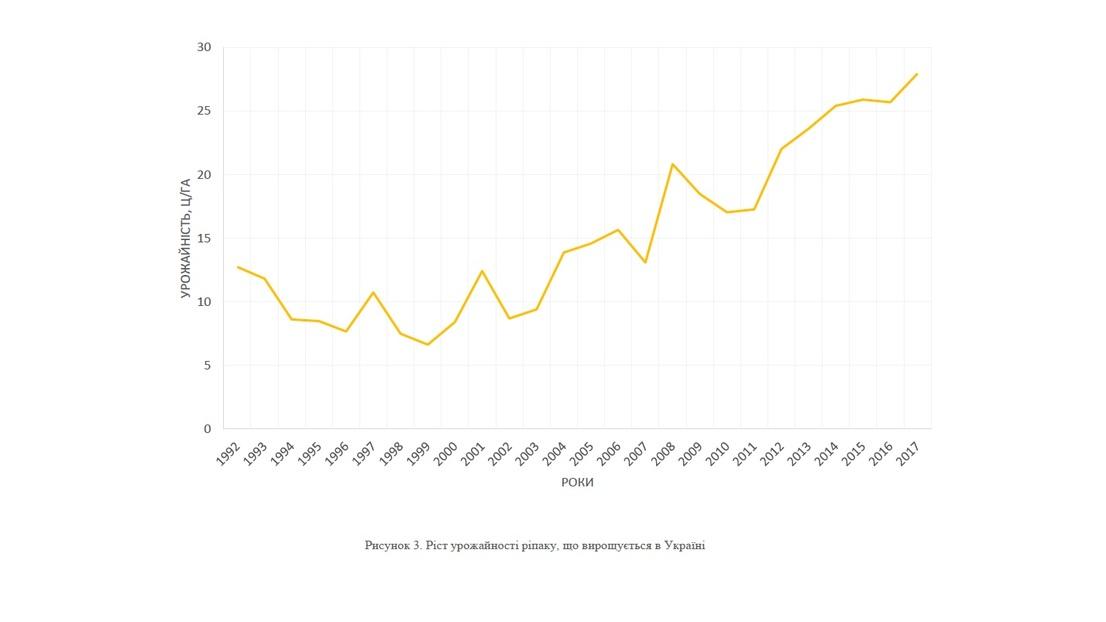The first harvest of the season
Rapeseed is the first harvest of the year, and therefore the first profit of the season. By and large, not much is needed to successfully grow rapeseed, just sow it in moist soil and protect it from pests. Rapeseed is perhaps one of the most flexible crops, as it is successfully grown in all regions of our country, although each has its own specifics.
It is worth reminding everyone that rapeseed, like soft wheat, is essentially an interspecific hybrid obtained by crossing a type of cabbage and rape. In the cruciferous plant family, such hybrids can often arise spontaneously, because these plants easily cross with each other (Fig. 1). If we recall the basics of breeding, most of the advantages of rapeseed can be explained by the phenomenon of heterosis, which is inherent in all hybrids and not only in the plant world. Rapeseed combines two genomes, and over the entire period of cultivation, the most valuable economic traits from both have been selected.

Genetic narrowing of rapeseed
One of the peculiarities of rapeseed is that over the past 60 years, the genetic diversity of the crop has been severely reduced several times. Such narrowings usually occur after the discovery of an extremely valuable economic trait. It often happens that the donor of the trait is a single unique genotype, and in order to transfer this trait to other genotypes and create new varieties, all available material has to be crossed with the trait donor. This, in turn, leads to a strong affinity of the materials, which is not desirable, since the greater the genetic diversity of the source material, the more plastic and productive varieties or hybrids can be obtained.
The first narrowing of genetic diversity occurred in the 60s of the last century, when the first two-zero varieties with reduced levels of harmful substances in the oil were developed, such rapeseeds were called canola (“Canadian Oil Low Acid”) because they were developed in Canada, which remains the world leader in the production of rapeseed and rapeseed oil. Two-zero varieties, or hybrids, have a very low content of erucic acid and glucosinolates in their seeds. The development of such varieties has made it possible to use rapeseed oil for food purposes and meal for feed production. Today, only such rapeseeds are grown in Ukraine. The above-mentioned substances are harmful to human health and can cause certain chronic diseases of the cardiovascular system if consumed regularly. The first double-null variety, Oro, was the ancestor of all modern varieties of rapeseed for food use.
The next narrowing of genetic diversity occurred in the 80s with the discovery of cytoplasmic male sterility. This phenomenon made it possible to produce F 1 hybrids on an industrial scale. At the same time, it again led to the need to cross all forms with the same donors of male sterility and fertility restoration traits. The F 1 hybrids differed from the varieties in terms of yield, but also had a number of disadvantages. Since sterility was borrowed from radish, along with this useful trait, some radish genes were transferred to rapeseed, which reduced the quality of the oil. This problem was solved in the early 2000s, when only one gene responsible for restoring fertility in F1 hybrids was left in the rapeseed genome.
Today, similar processes are also taking place, because each breeding cycle has its own trends, and the most relevant traits among the potential bottlenecks are resistance to pod cracking and resistance to certain particularly harmful diseases, such as the turnip jaundice virus. Even with the use of the most modern and fastest technologies for creating new source material, such narrowing of genetic diversity cannot be avoided, as hybridization and subsequent selection remain one of the main methods of breeding.
Thus, it is logical to conclude that the genetic diversity of rapeseed source material is severely limited and most breeding companies use the same or very similar material to create their hybrids, and Ukrainian companies are no exception (Figure 2).

Similarity of genetics
It is logical that a question may arise: what is the difference between rapeseed hybrids from different manufacturers? The answer is simple - almost nothing. Each hybrid has its own morphological characteristics, but most have an identical set of traits and the differences are more in the advertising policy of each company than in the genetic material.
In order to realize the full potential of any hybrid, it is necessary to follow the cultivation technology recommended by seed producers. To date, Ukraine has seen a steady increase in the average yield of winter rapeseed (Fig. 3). There are many factors behind this, but the main ones are likely to be improved climatic conditions for rapeseed (mild winters, which have been typical especially in recent years), the introduction of new more intensive hybrids on the market (although it is worth noting that many farms have been growing the same hybrids for the last 20 years) and improved cultivation technologies. In short, our farmers have learned how to grow rapeseed successfully.

Growing demand for Ukrainian hybrids
There is another positive trend in Ukraine: the growth of rapeseed planted with seeds from domestic producers. So far, this is a subtle movement, but everything starts small. For example, one of the leading farms in Donetsk region significantly increased the area under hybrids of Ukrainian producers after being forced to write off and re-discover several thousand hectares of rapeseed of famous foreign brands in spring 2020 due to late frosts. Only one rapeseed hybrid was able to withstand that harsh winter and then the spring with all its late frosts, and that was the imidazoline-resistant mid-early hybrid Blackstone of VNIS breeding. It so happened that the main advantage of this hybrid was its extreme plasticity and high ability to regenerate.
The potential of Ukrainian breeding and science in general can only be realized with the support and trust of farmers, the government and business. By buying Ukrainian, we invest in the future of our country, in our financial independence and stability.

 Choose a country
Choose a country